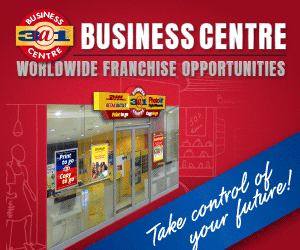Sales incentive programs play a key role in motivating and rewarding sales professionals to meet specific targets or goals. They provide motivation to work hard and go the extra mile, to focus on their tasks, motivating them to sell more of what’s important, to nurture customer and partner relationships and get them excited about your products and brand. Sales incentives – whether cash, commission, prizes, travel, recognition, training and other perks – can be serious motivation and productivity drivers.
There’s always a caveat, though! A sales incentive program only works when the programme is actively and strategically managed, monitored and measured against objectives, proactively and consistently communicated and continually enhanced based on data and learnings.
Fundamentally, a successful incentive program will cater for the individual strengths and weaknesses of your salespeople, promote a sales team’s collaboration, support business objectives and complement a deal or brand’s unique characteristics. It’s much easier said than done!
In fact, a 2022 survey by Channel Marketer Report and Demand Gen Report, reported that fewer than 20% of B2B executives said their channel partner programs were “very effective”, while another research survey by Forrester done in 2020 covering 10,000 business leaders in the US, showed that 58% of the incentive programs had failed miserably. Only 5% achieved set objectives, while the remaining 37% could only achieve the objectives partly.
So what are the fundamentals of a successful sales incentive program? Jean Claude Latter, Channel & Workforce Solutions Director at Achievement Awards Group provides these steps:
1.Set clear and measurable objectives for the program
Understand your organisation’s goals and connect them to your program’s tactics, focusing on a strong goal-based structure. Targets and rewards should resonate with your partners, and the program needs to be fair and realistic in terms of targets and how measurement will be done. Benefits and incentives are not a one-size-fits all solution, and in many cases, it is necessary to have number of different incentives for different objectives.
2.Identify key performance indicators (KPIs) that are aligned to company objectives.
There’s no one-size-fits-all to sales incentive programs – it takes collaboration, and a defined strategy that incorporates your business objectives with those of your salespeople. Be realistic and fair in determining KPIs and how these will be measured.
3.Design the incentive rules structure and make sure everyone understands what to do.
Put people at the centre of the sales incentive solutions and provide innovative incentive methodologies. It is important to educate everyone about the incentive program, the benefits, how it works, and then promote it proactively and consistently. You need to give people good reason to participate. Your messages need to be informative and motivating to cut through the noise and resonate with your audience.
4.Communicate the program.
The best incentive program, designed by the best minds, with great incentives and rewards can turn into a recipe for failure because of poor communication, leaving the intended recipients and partners without information. In the absence of the right tools and resources and ongoing communication, the best program becomes ineffective. Engagement is the key that makes the difference between a successful and failed sales incentive program. It’s not simply a case of implementing and then hoping it will run on autopilot. Keep people inspired and consider elements such as gamification, quizzes and leader boards to keep salespeople motivated.
5.Monitor and adjust the program.
Keep testing and evolving your incentive program to remain relevant and engaging to your partners. Measure the program’s success and provide feedback, and collect enough of the right data to prove and quantify the ROI of the program. Incentivising can be a costly exercise, so it’s essential to track and manage your ROI.
6.Overcome challenges.
Ongoing, proactive monitoring is the key to identifying challenges. Sometimes even seemingly minor issues can become reasons for failure. Solving for challenges and optimising the program will make it a results and growth driven endeavour.
To be true value creators, your ultimate goal must be to create the lasting behaviour change that will transform your sales and generate strong performance over the long-term.








